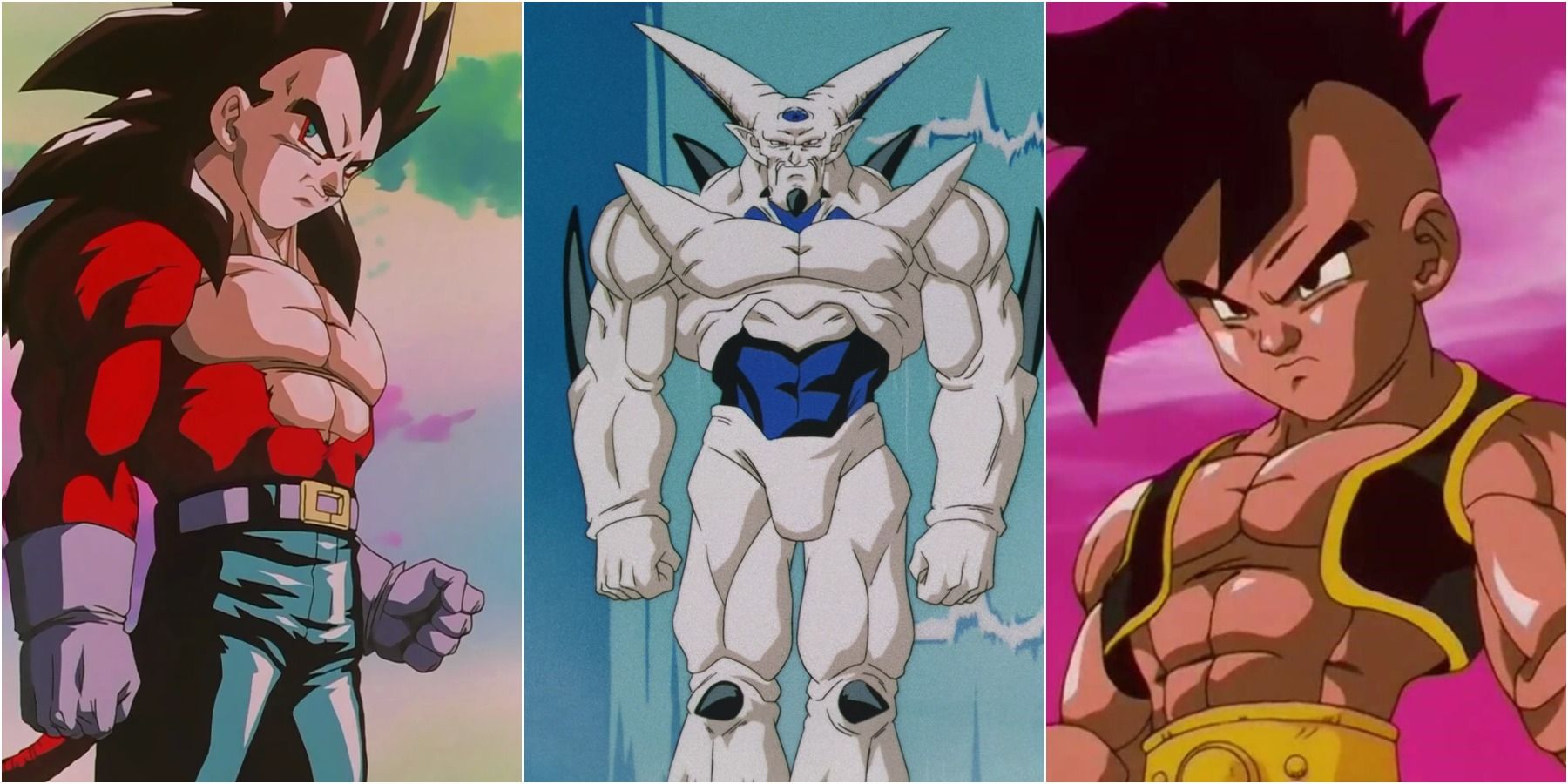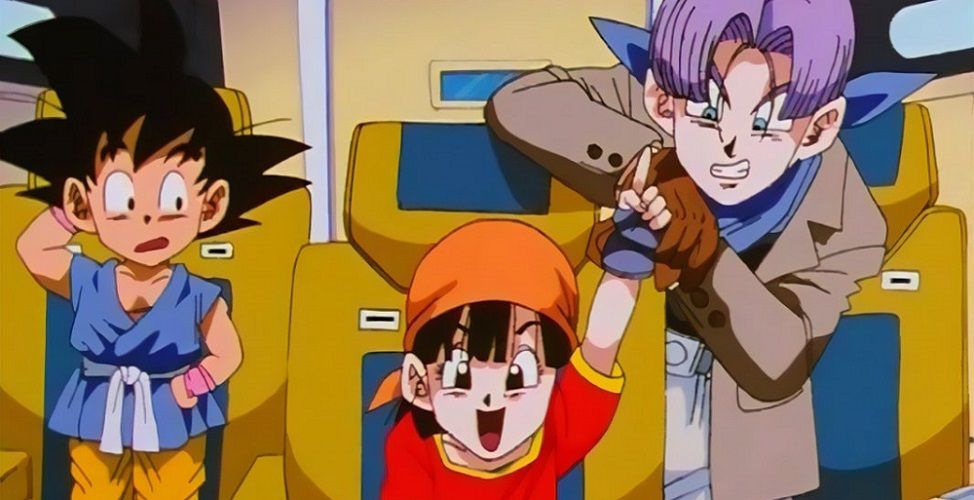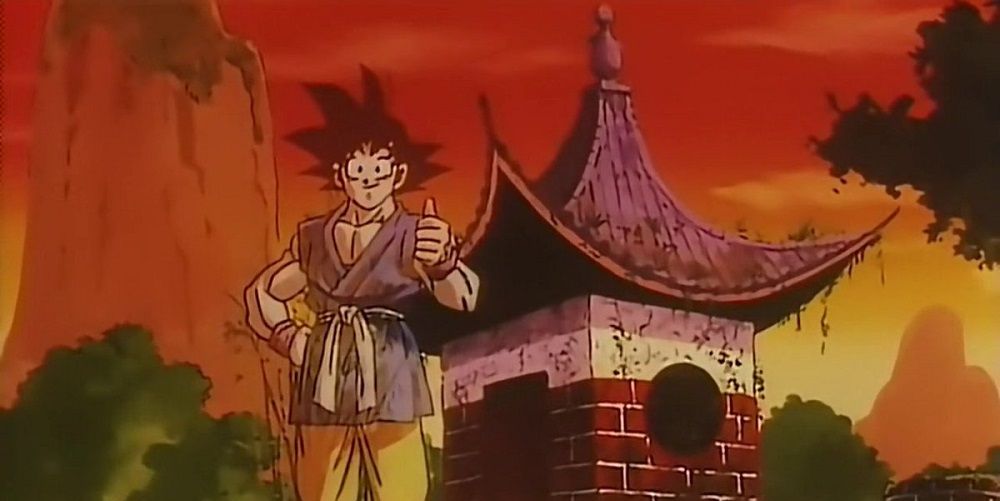In comparison to the enduring popularity of Dragon Ball Z and more recently Dragon Ball Super, Dragon Ball GT is in a weird place. While it was once received moderately well in the West, and was arguably more popular there than the original Dragon Ball, it has aged poorly. A quarter-century after its conclusion in Japan, GT, once Z's only sequel, is largely ignored and debatably not even canon, being supplanted by Dragon Ball Super, despite the later fitting in between Z and GT.
Small changes in Super, like the Pilaf gang turining into children, Kibito Kai splitting back into Supreme Kai and Kibito, Frieza's revival, and the rehabilitation of Android 17 directly conflict with GT's events, as do Goku and Vegeta's new Super Saiyan God forms. While GT has never been explicitly disavowed, the message from Akira Toriyama and his team is pretty clear: GT should be treated at most as an alternate timeline, separate from the events of Super, and at worst should be forgotten entirely. Why has this whitewashing occurred, and is GT still worth watching?
Trying to Recapture the Magic
Aside from designing a few characters, Akira Toriyama was largely uninvolved in Dragon Ball GT's development, and it shows. It takes place 15 years after the end of the Majin Buu Saga, and 5 years after the end of Dragon Ball Z. In the first episode, Emperor Pilaf, Dragon Ball's very first villain, wishes for Goku to become a kid again using the mysterious Black Star Dragon Balls, and it works. But here's the kicker: Goku still has nearly as much power as he did at the end of Z, making the change in his body almost purely cosmetic.
Goku and his granddaughter Pan, along with a grown-up Kid Trunks, end up in space searching for the Black Star Dragon Balls in GT's first arc. It was obvious that the writers were attempting to recapture the comedy and adventure elements of Dragon Ball that were largely put off to the side in Dragon Ball Z, but the change in formula received immense backlash. In reality, the Black Star Dragon Ball Saga has actually aged the best out of all of GT's arcs. The new planets and characters introduced are usually pretty interesting, and in some ways do feel reminiscent of Dragon Ball's earliest storylines, especially in lacking long, dragged-out fights and the variety of environments and characters introduced. That said, this version of Pan and her robot companion Giru are boring at best and downright annoying at worst, and the entire arc feels generally unnecessary, even if it has some good points.
The End of GT
From here on out, GT's arcs go right back to Z territory, scrapping adventure in favor of bringing back villains that take forever to defeat. Whether it's the body-snatching alien Baby, Super Android 17, or the Shadow Dragons in the final arc, the fights are needlessly long and drawn out. They're often riddled with pointless comedic diversions as in Goku's fight with Frieza for the sake of padding. Z's worst elements are replicated, with almost none of the same payoff or novelty.
It's also worth talking about the obligatory new transformation, Super Saiyan 4. Both Goku and Vegeta manage to achieve it by series' end, the latter with help from a special belt made by Bulma. Design-wise, it's a major departure from previous Super Saiyan forms, and is nakedly an attempt to incorporate the Great Ape transformation Saiyans have into a smaller, humanoid form. It doesn't look awful, but the departure from the norm is jarring. Additionally, the fact that Goku's body becomes an adult again only while accessing this form feels a bit forced.
All of this is annoying but forgivable, but unfortunately this only scratches the surface of GT's mistakes. Once-important characters like Krillin and Piccolo barely appear, and in both cases seemingly do so only to die. And for anyone wondering whether Goku eventually uses the Dragon Balls to turn back into an adult: no, he doesn't. In fact, aside from an epilogue set way in the future where Pan is an old woman, the series ends with Goku, still in kid form, leaving forever with Shenron. GT is a strong contender for the worst ever ending to an anime.
With all these flaws, GT is easily the weakest entry in the Dragon Ball franchise. It's hard to come up with a reason anyone but the most hardcore Dragon Ball fans would need to watch GT in the present day. That said, GT does remain interesting as an example of what can go wrong when a writer leaves creative control over their work to others. As in the case of a good deal of anime which diverge from their respective manga, like the 2003 version of Fullmetal Alchemist, the writers were forced to work with characters they appreciate but weren't quite sure how to utilize. It's clear that GT's creators had a deep love for Dragon Ball, but were out of their depth without Toriyama's input.



